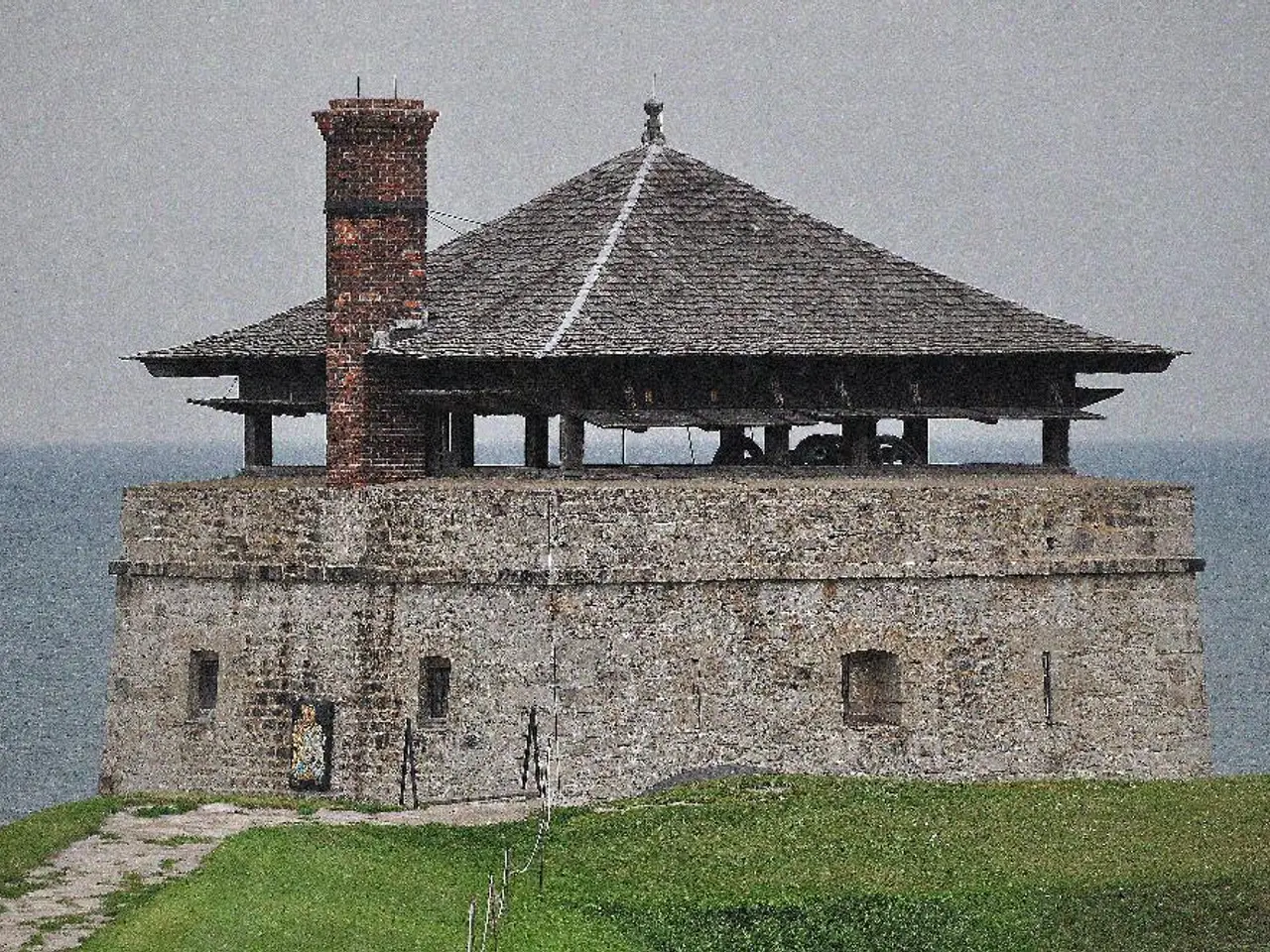Approval granted for Kirsty Young's house construction on a secluded Scottish island, home to roaming wallabies.
In a significant development, Kirsty Young and Nick Jones have secured planning approval for a luxury eco-retreat on Inchconnachan Island, also known as "Wallaby Island." This picturesque island, part of Scotland's National Scenic Area and a Special Area of Conservation (SAC), is renowned for its unique wallaby population and diverse wildlife.
The proposed development includes a three-bedroom lodge, a plants room, stores, infrastructure for an on-site warden, connecting boardwalks, and updated jetties. The lodge will be a low-impact design, using natural materials and raised walkways to minimise ground disturbance.
Water for the retreat will be sourced from an on-site borehole, filtered, and stored in tanks. Wastewater will be treated using a Klargester Biodisc system, filtering out pollutants before discharge into a soakaway system.
The Loch Lomond and Trossachs National Park Authority (LLTNPA) granted planning permission for the project, citing significant biodiversity benefits and a commitment to sustainable development. However, the approval has been met with mixed reactions, with some environmental organizations voicing concerns about potential damage to native habitats.
The wallabies on Inchconnachan Island will have their numbers and impact on native flora carefully monitored. The plans also include the removal of invasive species, such as rhododendrons, to aid the "natural regeneration of the site and wet woodland/habitat diversity."
Inchconnachan's ecosystems have been under strain due to invasive species and overpopulation of certain species, such as wallabies and deer. The Loch Lomond and Trossachs National Park Partnership Plan (NPPP) 2024-29, currently under consultation, highlights concerns about sustainable practices and the need for significant changes to ensure it properly addresses environmental objectives.
The development fits into a larger conversation about sustainable development and wildlife management challenges in Loch Lomond and the Trossachs National Park, where official plans are still being debated and refined to better address ecological sustainability and conservation issues.
Inchconnachan Island has a rich history, once serving as a holiday retreat of the Colquhoun family of Luss. In the 1940s, aristocrat Fiona Gore, Countess of Arran, introduced a colony of wallabies to the island, which has since become one of its most notable features.
Despite the controversy, the LLTNPA believes that the plans, paired with a rigorous island management plan, will result in net benefits for biodiversity. A full-time island warden will be employed to oversee conservation efforts and manage waste removal from the island.
The petition to protect the wallabies gathered thousands of signatures, with critics fearing that the new development would end the unique colony. However, the LLTNPA maintains that the plans are designed to ensure the long-term survival and protection of the wallabies and the island's other wildlife.
[1] Source: Various news articles and reports on the Inchconnachan Island eco-retreat development.
- The development of the eco-retreat on Inchconnachan Island, initially a holiday retreat, will implement a low-impact design for a three-bedroom lodge.
- Part of the planning approval for this project includes steps for mitigating potential damage to native habitats through careful monitoring of wallaby numbers and removal of invasive species.
- Investors, interested in sustainable development and home-and-garden projects, may find the eco-retreat an interesting opportunity in real-estate.
- Environmental scientists, concerned about climate change and its impact on ecosystems, have raised concerns regarding the development's potential impact on native habitats.
- The lodge's design prioritizes sustainable practices, such as using natural materials and employing a raised water filtration system for on-site usage.
- The onset of the project coincides with the Loch Lomond and Trossachs National Park Partnership Plan 2024-29, aimed at addressing environmental objectives and sustainable practices within the park.
- Building the eco-retreat on Inchconnachan Island, once famous for its wallaby population, will require financing the project's environmental science elements along with its design and construction.




